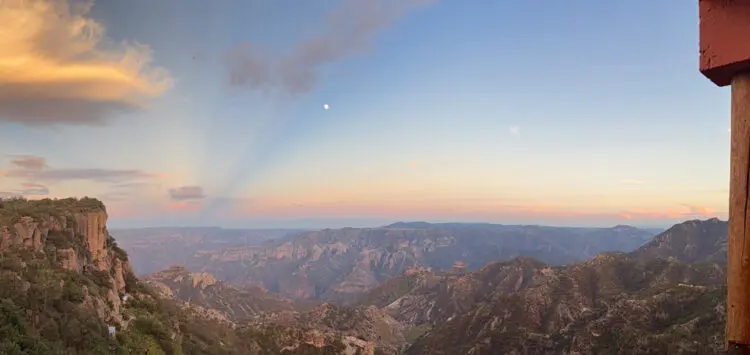The UTMB World Series visited Chihuahua in Mexico.
While the Rarámuri, the indigenous people of the Chihuahua region of Mexico, have a long tradition of running as a way of life, whether hunting or traveling, it was Christopher McDougall’s book, Born To Run, that caught the attention of runners around the world.
Honoring the cultural heritage of the Rarámuri (‘those with light feet’) people, they have inspired the world with their ability to run long distances in mountainous terrain. Their colorful traditional clothing and Huarache sandals made from car tires and leather straps make the people of the region instantly recognizable.
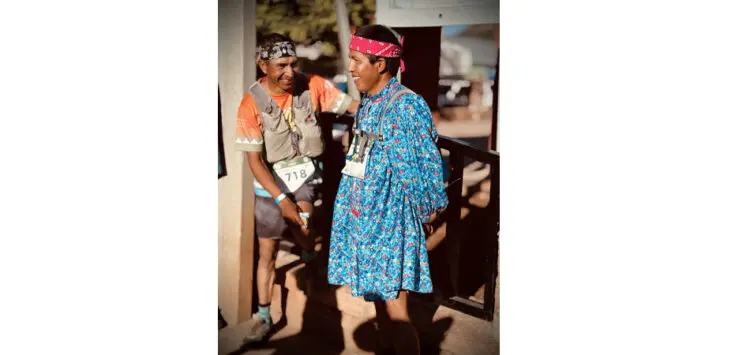
Retreating to the high mountains and the Copper Canyon to escape Spanish influence in the 16th century.th During the 19th century, the Rarámuri are the name the people gave to themselves, and outsiders (including McDougall) used the name Tarahumara to refer to them.
Since running was a way of life for the Rarámuri, it was perhaps inevitable that events and races would eventually develop in the region.
Michel Poletti, co-founder of the UTMB event, is a person with deep roots in trail running and was inspired by Born To Run, so with the expansion of the UTMB World Series, UTMB Chihuahua was born.
The Chihuahua region is one of the thirty-one states that, together with Mexico City, make up the beautiful country of Mexico. Its capital is the vibrant city of Chihuahua. Located in the northwestern region of Mexico, Chihuahua is bordered to the north by the United States states of New Mexico and Texas.
Founded on July 6, 1824, this state is divided into 67 municipalities. Chihuahua is the largest state in the Mexican Republic, representing 13% of the country’s surface. Located in the center of the continent and surrounded by majestic mountain ranges, its climate is mostly dry with little rainfall. Chihuahua’s rich history is marked by the presence of several indigenous groups, including the ‘runner tribe’, the Tarahumara or Raramuri.
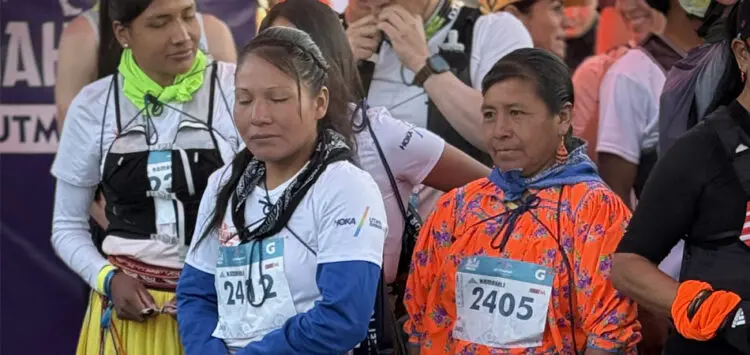
This leg of the tour’s global calendar of events brought more than 2,000 runners from 38 countries and five continents to Mexico as the UTMB arrived in the quiet town of Creel. With races ranging from 8K to 100 miles, the UTMB now extends its appeal beyond hardcore ultra enthusiasts, but all races feature difficult, technical routes with plenty of added elevation to test even the most seasoned trail athletes.
Along each of the routes, you will pass by the Divisadero Station of the Chepe Train, cross the communities of Huerachi and Mogotavo and venture on an impressive trail where you will marvel at the imposing copper-colored rock walls and the incredible depths of the canyons of the Sierra Madre Occidental.
The big event of the weekend, the Rarámuri 100 miles, included almost 8,000 meters of elevation gain and was the event that came closest to a Rarámuri victory and demonstrated the lifestyle of local runner, Mauro Martín Quimare. Dressed in traditional Rarámuri dress and thin-soled sandals, the local man almost secured legendary status. Quimare ran 30 miles to the race start line before setting the pace for more than half the distance.
Finally it was Canadian Victor Larocque who claimed victory in what was his first race over the 100-mile distance after taking the lead with the marathon distance remaining.
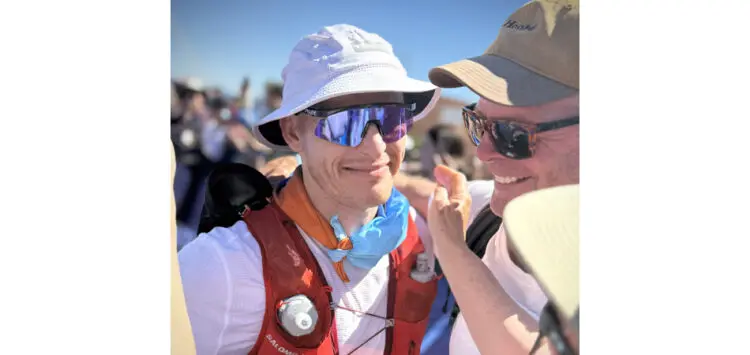
More than 130 Rarámuri runners participated in the different races during the weekend of events.
Complete results for all Chihuahua by UTMB events can be found here.
While participating in any of the events gives you the opportunity to experience the Copper Canyon up close, its enormity requires a little more time to explore it and its surroundings.
I was able to spend a few days taking in the vast splendor of the Chihuahua region, along with its out-of-this-world views, and I was not disappointed. The vast expanse could easily be the backdrop for a movie, with extraordinary lunar-style landscape and prehistoric stone structures.
VisitMexico
I visited valleys named after frogs, mushrooms and monks, each named for their resemblance to enormous stone structures; each of them was put in place thousands of years ago.
The Copper Canyon, or Copper Canyon, is a group of six canyons in the state of Chihuahua, Mexico, formed by volcanic activity millions of years ago and spanning 25,000 square miles and more than a mile deep.
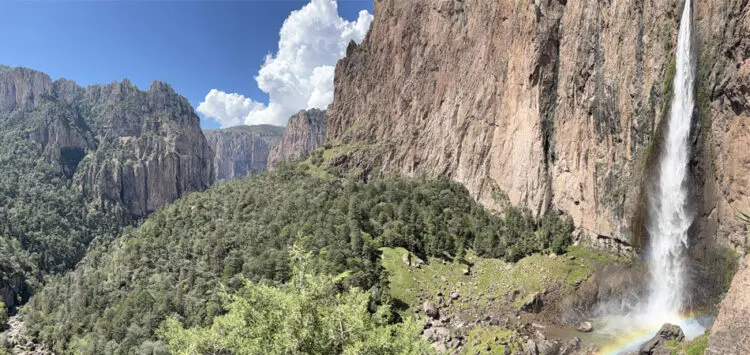
The Basaseachic Falls are over 240m high and are the highest waterfalls in Mexico all year round, and if you’re feeling up to it, an easily accessible path, although not for the faint-hearted, due to its steepness, will take you to the foot of the falls. Another worthwhile stop is Cusarare Falls.
Although they are “only” 30m high and around 30m wide, they are just as spectacular as the larger falls and again allow you to get close to both the top and bottom of the falls. The hike will take you past spectacular waterfalls, ancient stone formations and ruins, as well as cave dwellings and jaw-dropping landscapes.
To conclude my trip, I took the Chepe Express, a train ride from Creel to Los Mochis, crossing the Copper Canyon and the Sierra Tarahumara to the Pacific coast, with a landscape that is simply a pleasure to behold. The trip is truly an opportunity to enjoy the scenery and witness the scale of the environment from deep in the valleys.
Chihuahua for UTMB was not just a race; is a celebration of Chihuahua’s landscape and culture, drawing runners from around the world to witness the spectacular terrain and challenge themselves within it.
Find out more about Chihuahua here.
